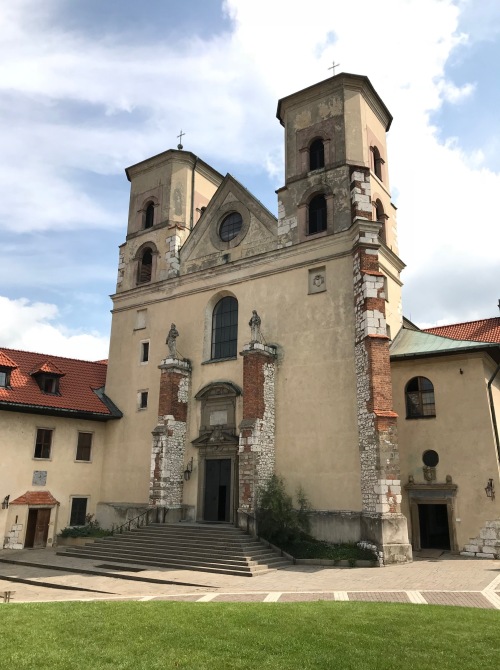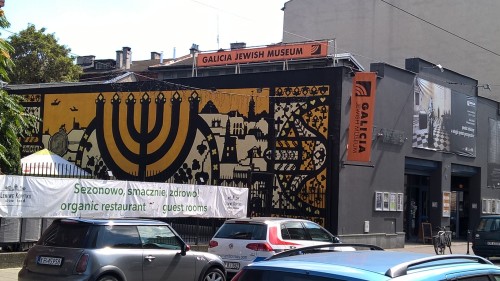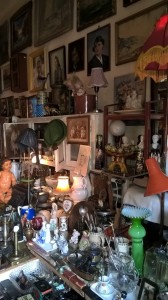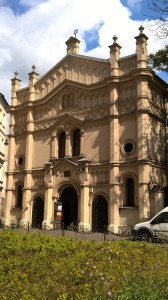The Cracovians have a saying: every other building in their city is a church. It does seem that way, as you walk around. But for some years now, I’ve adapted it: every other building is a restaurant.
The number of eateries in Cracow is mind-boggling, and even more incredible is that so many are appealing (and, by the way, good value). Often their decor is stylish and modern, housed in grand period buildings – a winning combination.
It’s been a long while since my last full blog on Krakow’s eateries: https://polskadotty.wordpress.com/2012/05/19/krakow-top-5-restaurants/. It seems high time for an update, especially as Krakow has been selected the 2019 European Capital of Gastronomic Culture.
Some of the restaurants I featured back in 2012 remain favourites now. So, we still adore Hawelka, which continues to offer tasty and elegantly presented traditional Polish food (“Staropolska”), and they’re not afraid to adapt the dishes on request (parents of fussy young eaters take note).
Steakhouse Pimiento still has the tenderest beef in town, and the most delightful leafy arbor in which to consume it. Only thing is it remains eerily quiet, at least when I go there. Maybe would-be guests fear I ate all the (steak) pies…
And Ariel remains our go to restaurant in Kazimierz – the Jewish quarter of Cracow. It not only provides the widest selection of traditional Jewish dishes, but its complex of antique furniture filled rooms, accompanied by quality klezmer music most nights, is redolent of a bygone age.
A new favourite is Bunkier, now more popular than the adjacent museum of contemporary art to which it belongs. This is a marvellous terrace of rickety wooden tables that gives directly onto the enchanting park circling Cracow’s old town. It used to be all about tea (endless brews) and cake, but now includes a decent food menu. Halloumi sandwiches, succulent beef burgers, crispy falafel, hummus – we’ve tried all these dishes and more, and found them fresh and well prepared. Oh, and the Tyskie beer is said to be delivered within 24hrs of being brewed…
The curiously named Kogel Mogel (after an egg yolk based dessert of Jewish origin) on Sienna is an official partner of the European Gastronomic Academy that bestowed on Krakow its 2019 honour. This is an upmarket establishment, where the food has a nouvelle cuisine feel. We enjoyed (amongst other things) the steak tartare to start, then grilled duck, and goat’s cheese salad. Eat in the peaceful courtyard to the rear if you can.
India Masala on Maly Rynek is a home from home (Indian cuisine being the UK’s national cuisine…). The difference with this Indian restaurant – and why we love it – is you sit outside invariably in balmy sunny heat on the cuter of the two central Krakow squares. As for the food, it’s good portions of quality Indian fare at attractive prices. What’s not to like? Don’t miss out on the balti and tikka. Note the sister restaurant on Tomasza proffers similar fare from a cool (in every sense) grotto.
Kramy Dominikanskie on Stolarska is a remarkable place – really another Hawelka or Ratuszowa (the town hall cafe – see below) serving wholesome Staropolska food but at a half or even third of the price. Zurek or “sour rye” soup – a personal favourite – is as excellent here as anywhere, for the princely sum of… £1-50. Try also the bigos (hunter’s stew), and salads.
If you’re slightly off the beaten track in Podgorze visiting the Schindler Museum or MOCAK, don’t hesitate to make a pit stop at Orzo Nature Restauracja. True to its name it’s a planet-friendly establishment, featuring a cavernous inside bedecked with foliage. Burgers/pizzas are the name of the game here; we had the latter; they were good, and the former looked appetising, too.
Other recommendations include:
Amarone – an upmarket Italian restaurant off Tomasza with a stunning vaulted glass ceiling. Between noon and 4pm they serve a 7-course taster meal.
Alchemia – a fashionable bohemian haunt in Kazimierz, serving a wide variety of street food and the like – it becomes more of a night club evenings.
Dynia – our the back of Dynia, meaning “pumpkin”, is its piece de resistance: a high walled, spacious, tranquil garden perfect for relaxing, with a feel not unlike that of Bunkier. A wide variety of good food on offer, with an emphasis on… pumpkin.
Ratuszowa – we’ve been meeting our friends at this cafe below the town hall since God was a boy. It’s more good Polish food – slightly overpriced. Its USP is the live music playing most nights. Check out The Old Metropolitan Band whilst sipping the vermouth usually on offer. Hidden gem is the inside, essential in winter, no doubt largely disguised to summer tourists.
Jonathan Lipman is the author of Polska Dotty, a handbook of Poland – which features more on Polish restaurants and cuisine…





























